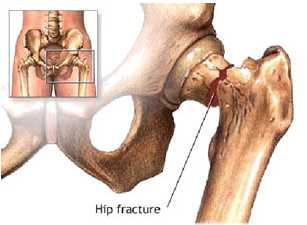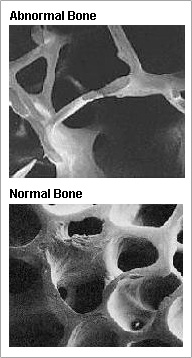 | ||||
 | ||||

Accuscan Wellness Screening
The mission of Accuscan Wellness Screening is to make people aware of any undetected health problems and encourage them to seek follow up care with their physician. We are dedicated to providing the highest quality preventive screenings at an affordable rate.
How Are Health Screenings Conducted?
Highly skilled technologists conduct the painless, non-invasive, ultrasound screenings. Our inexpensive preventative health screenings are completed in a matter of minutes. We even offer a special package price when you select our Complete Wellness Package which includes our stroke/carotid artery, abdominal aortic aneurysm, peripheral arterial disease, and osteoporosis screenings.
After state-licensed and board certified physicians review the results, health screening participants receive their findings. If disease is detected through our screenings, your physician can take action to diagnose and treat.


801.456.7226
Carotid Artery and Stroke Screening Information
Stroke is the third leading killer in the United States, resulting in the following statistics annually:
- 750,000+ victims
- 160,000 deaths (3rd leading cause of death)
- 266,000 survivors with permanent disabilities
- 30,000 new permanent admissions to nursing homes
- Over 4 million living survivors of stroke
- Every 45 seconds in the USA, someone has a stroke
- Huge economic impact with costs of $40-$70 billion per year
- Stroke occurs when a blood vessel feeding the brain bursts or is clogged, causing a sudden disruption in the
Carotid artery disease is the leading cause of strokes. More than 50% of stroke victims present no warning signs. After the age of 55, the risk of stroke doubles every 10 years. Most significantly, 97% of the adult population cannot name a single warning sign of a stroke.
When the carotid arteries become blocked with plaque (atherosclerotic plaque),
blood flow to the brain is compromised.
Accuscan's ultrasound specialists use painless and non-invasive Doppler colorflow
ultrasound technology to provide images of the carotid arteries on both sides of your
neck and measure the velocity of the blood flow through these vessels.
Back To Top...
Abdominal Aortic Aneurysm
The abdominal aorta is the largest blood vessel in the body. It is the main artery stemming from the heart. An abdominal aortic aneurysm (AAA) is an enlargement in the lining of that blood vessel. As the lining gets weaker, primarily due to age and other risk factors, the vessel wall becomes thinner and expands.
Once discovered, an aneurysm is measured in diameter and is carefully monitored. When it grows beyond five (5) centimeters in diameter, the aneurysm is often surgically corrected. An aneurysm can rupture, producing catastrophic bleeding and results in a fatality 80% of the time. Most people with an abdominal aortic aneurysm present no warning signs.
The most common location for an abdominal aortic aneurysm is below the area where the aorta divides to supply blood to the kidneys and above where it divides to supply blood to the pelvis and legs.
An aneurysm is an abnormal ballooning or enlargement of a blood vessel. When this happens in the abdominal portion of the aorta (the largest blood vessel in the body) it is known as an abdominal aortic aneurysm.
Aneurysms are caused when the lining in the wall of the blood vessel becomes weakened and expands in size. When the aneurysm reaches approximately five (5) centimeters, it is at high risk for rupture. Most physicians will consider surgery once the aneurysm reaches this measurement.
Ultrasound Specialists uses ultrasound imaging technology to image your abdominal aorta and measure its size along the course of the vessel. The technologist applies an acoustic gel on your abdomen. A painless instrument, a transducer, is moved around your stomach to visualize the inside of the abdominal aorta.
Back To Top...
Peripheral Arterial Disease and Screening Information
Approximately 12-15 million Americans suffer from Peripheral Arterial Disease (PAD), often
referred to as hardening of the arteries or atherosclerosis.
This narrowing of the blood vessels in the legs is caused by the buildup of fatty plaque and
is a strong predictor of heart disease. Peripheral Arterial Disease may show up in leg arteries
before there are any signs or symptoms. Many people experience discomfort while walking
that is relieved by rest, but are unaware that it is due to blocked arteries.
Arteries become narrowed and blood flow decreases in atherosclerosis.
It is a condition in which the large and medium sized arteries supplying blood to the lower
extremities become narrowed or clogged, slowing or stopping the flow of blood.
The effects of this condition not only cause pain, disability and put limbs at risk, it is also one
of the strongest risk markers available for predicting heart disease. Individuals with Peripheral
Arterial Disease are at a four-fold increased risk of heart attack and a two to three-fold greater
risk for stroke, compared to individuals of the same age without PAD.
A painless, quick and non-invasive Ankle Brachial Index (ABI index) test is performed using blood
pressure cuffs on the arms and ankles. The ABI index is a ratio between the pressures in your arms and legs and will identify most cases of Peripheral Arterial Disease.
Back To Top...
Osteoporosis is a disease in which bone becomes fragile and more likely to break. Bone is a complex living tissue that can heal and may be affected by poor diet and lack of exercise.
As part of the natural aging process, bones begin to break down faster than new bone can be formed.
Osteoporosis takes away the minerals that make up the internal supporting structures of bone until it becomes so weak and brittle that bending to pick up a newspaper, lifting a vacuum, or even coughing can cause a fracture.





The dark areas in the picture to the right of abnormal bone show less bone density and diminishing bone mass.
Hip fractures may require hospitalization, major surgery and may cause permanent disability or even death.
Osteoporosis is painless in early stages and most people are completely unaware of the condition until a fracture occurs.
Our osteoporosis screening consists of an analysis of your risk for bone diminishment using quantitative ultrasound (QUS) to measure the estimated bone mineral density of the heel bone. The result is expressed as a T-score that corresponds to World Health Organization guidelines.
The heel is measured because its bone is similar to that found in the hip where osteoporotic fractures occur most often. A Bone Mineral Density (BMD) measurement is a powerful predictor of skeletal strength and fracture risk. Your physician can use this BMD measurement along with your other clinical risk factors (gender, age, fracture history, family history, medications, smoking, exercise, calcium intake, and general health status) as an aid to diagnosis and patient mangement decisions.
Osteoporosis Screening Information


Accuscan's ultrasound specialists are community focused. We hold our preventive health screenings in churches, senior centers, community centers, country clubs, corporations, synagogues and organization meeting places to name a few.
If your company or organization would like to hold a health screening, please contact us and we will be happy to schedule one for you.
Back To Top...
UTAH'S PREMIER 3D MEDICAL CT SCAN & ULTRASOUND CENTER

